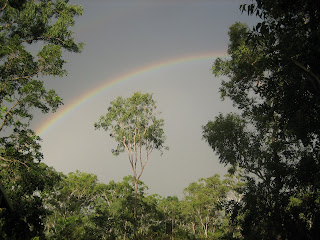exploring nature in your backyard

There’s gardening, of course … but I am focusing on activities to make your child aware of the flora, fauna and inter-relationships between elements of your garden. I’m blessed to have a very large block of native garden, but if you aren’t in my position perhaps there is a nearby park, garden or nature reserve that you could visit.
To begin exploring nature with your children encourage them to use their senses -
Sight
- take a magnifying glass and hunt for bugs. Look under rocks. You might also like to have some sort of bug keeper for further observations. You can use the CSIRO’s Backyard Biodiversity bugs guide to identify and learn about the bugs you find. (Safety Warning: some bugs sting, bite or are otherwise nasty, accompany younger children when hunting for bugs, teach your children not to touch bugs and to look before putting their hand in dark spaces).
- put a birdbath or birdfeeder in your garden and do some birdwatching. You can identify the birds at Birds in Backyards and you might like to make a simple field guide, as seen at Frugal Family Fun Blog.
- go looking for animal tracks. Somewhere with a little bit of loose dirt is a good place to look. Parenting Science has some other activities and ideas for exploring animal tracks.
- go spotlighting for possums and other night time creatures. If you find any cane toads, you can collect them for disposal (and explain why to your child).
- keep a record of the weather. Young children can draw a picture of the weather and older children might like to make temperature measurements. Find a container to use as a rain gauge.
- be still and quiet and listen to sounds in the garden – what can you hear? cars driving by, birds singing, your house creaking, dogs barking, wind in the leaves?
- use natural objects to make noises – stomp in leaves, find a fallen branch with leaves and swish it around (does it sound like the wind?), bang things with a stick
- with supervision, touch leaves of different plants, bark on trees, mud. You can make rubbings of some of the textures (mud might be a bit hard!)
- collect natural objects, such as sticks, leaves, flowers or rocks and make a nature collage.
- go out when it’s raining, get wet and stomp in puddles
- smell different flowers. Scrunch up green leaves and see what they smell like.
- since I have young children I strongly recommend that you teach them not to taste anything without asking an adult and that you employ an expert for nature tasting experiments.